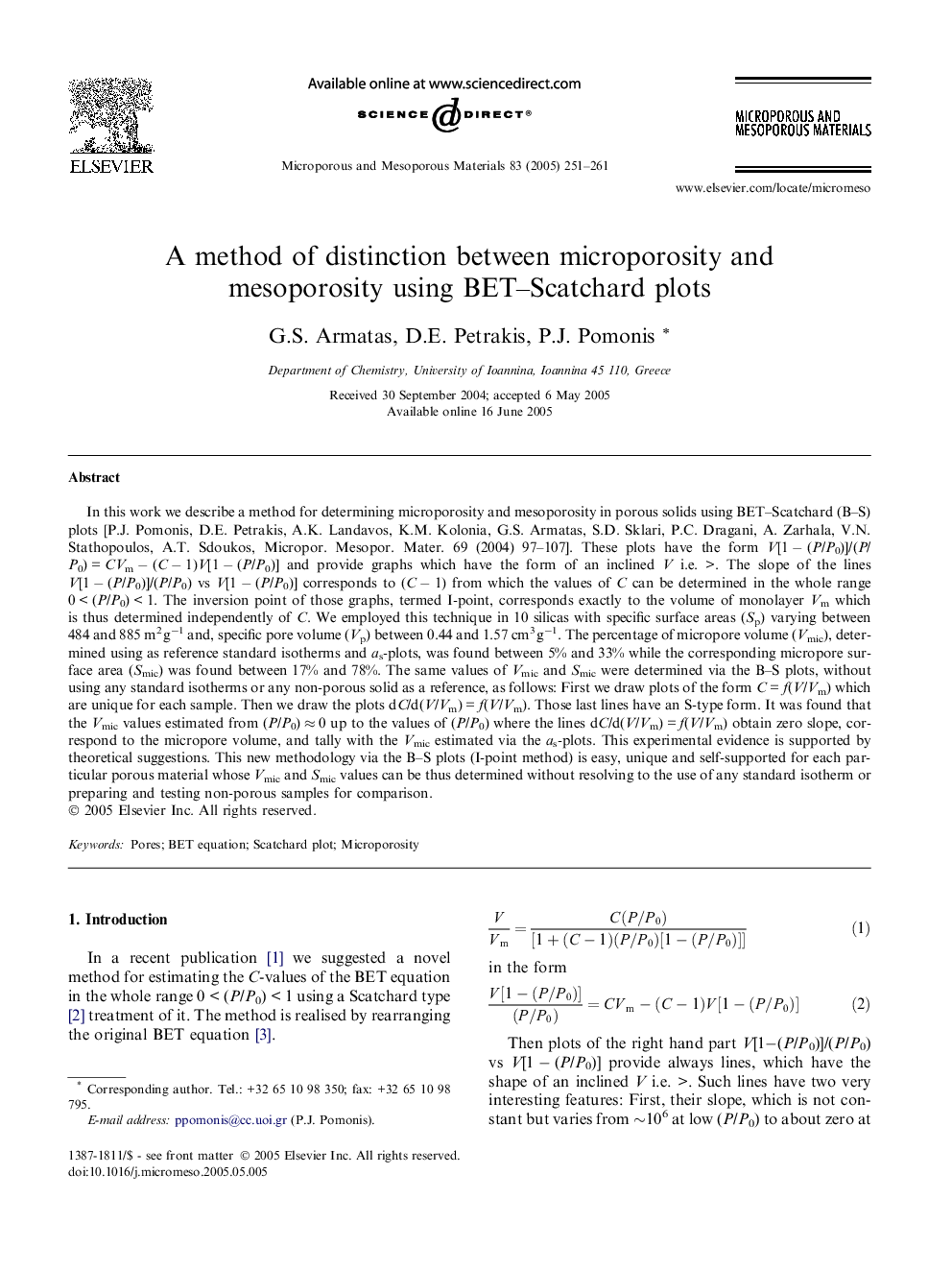| Article ID | Journal | Published Year | Pages | File Type |
|---|---|---|---|---|
| 9617657 | Microporous and Mesoporous Materials | 2005 | 11 Pages |
Abstract
In this work we describe a method for determining microporosity and mesoporosity in porous solids using BET-Scatchard (B-S) plots [P.J. Pomonis, D.E. Petrakis, A.K. Landavos, K.M. Kolonia, G.S. Armatas, S.D. Sklari, P.C. Dragani, A. Zarhala, V.N. Stathopoulos, A.T. Sdoukos, Micropor. Mesopor. Mater. 69 (2004) 97-107]. These plots have the form V[1 â (P/P0)]/(P/P0) = CVm â (C â 1)V[1 â (P/P0)] and provide graphs which have the form of an inclined V i.e. >. The slope of the lines V[1 â (P/P0)]/(P/P0) vs V[1 â (P/P0)] corresponds to (C â 1) from which the values of C can be determined in the whole range 0 < (P/P0) < 1. The inversion point of those graphs, termed I-point, corresponds exactly to the volume of monolayer Vm which is thus determined independently of C. We employed this technique in 10 silicas with specific surface areas (Sp) varying between 484 and 885 m2 gâ1 and, specific pore volume (Vp) between 0.44 and 1.57 cm3 gâ1. The percentage of micropore volume (Vmic), determined using as reference standard isotherms and as-plots, was found between 5% and 33% while the corresponding micropore surface area (Smic) was found between 17% and 78%. The same values of Vmic and Smic were determined via the B-S plots, without using any standard isotherms or any non-porous solid as a reference, as follows: First we draw plots of the form C = f(V/Vm) which are unique for each sample. Then we draw the plots dC/d(V/Vm) = f(V/Vm). Those last lines have an S-type form. It was found that the Vmic values estimated from (P/P0) â 0 up to the values of (P/P0) where the lines dC/d(V/Vm) = f(V/Vm) obtain zero slope, correspond to the micropore volume, and tally with the Vmic estimated via the as-plots. This experimental evidence is supported by theoretical suggestions. This new methodology via the B-S plots (I-point method) is easy, unique and self-supported for each particular porous material whose Vmic and Smic values can be thus determined without resolving to the use of any standard isotherm or preparing and testing non-porous samples for comparison.
Related Topics
Physical Sciences and Engineering
Chemical Engineering
Catalysis
Authors
G.S. Armatas, D.E. Petrakis, P.J. Pomonis,
